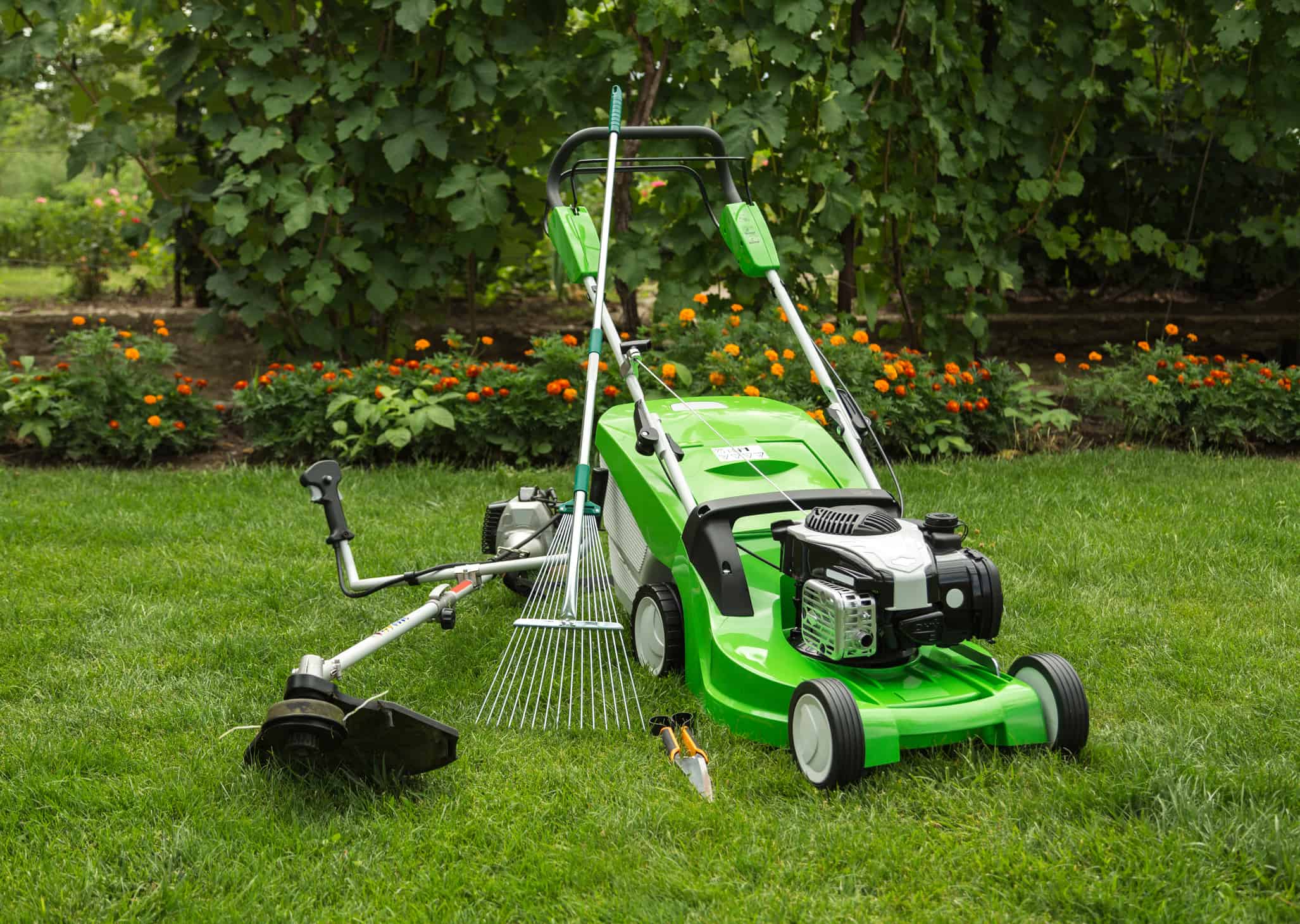Fall is on the way out, and we’re preparing for winter. As the temperatures drop and the days get shorter, the lawns grow slower – sometimes, growth will stop altogether. As winter approaches, homeowners will begin to prepare their homes for the cold, snowy period.
In many households, the process to winterize a lawnmower is the furthest from their list of priorities. Because your lawnmower has worked so hard to keep your lawns in top condition through the growing season, there is good reason that you should provide your trusty helper with proper care before you store it during the winter season. If you neglect this critical preventative step, you may face costly repairs or even the bill of a total replacement when spring comes along.
Let’s explore the 14 important steps to winterize your lawnmower.
1. Read the Owner’s Manual
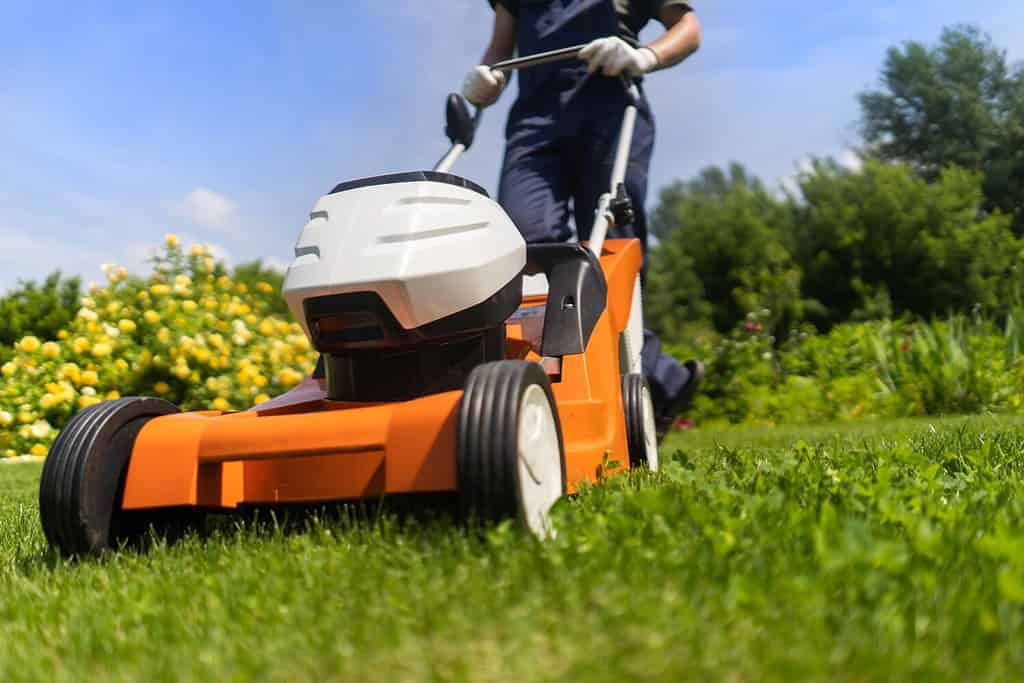
Keep your lawnmower’s owner’s manual at hand as a source of specification guidance.
©africa_pink/Shutterstock.com
Before beginning winterization, consult your lawnmower’s owner’s manual. Different mowers may have unique requirements, and the manual will contain specific instructions and maintenance tips for your machine’s model.
Consulting the user manual is especially critical if this is a new lawnmower and your first time preparing it for winter. Keep the owner’s manual in a convenient place to access vital safety guidelines, specifications, and maintenance tips.
2. Clean Your Lawnmower Thoroughly
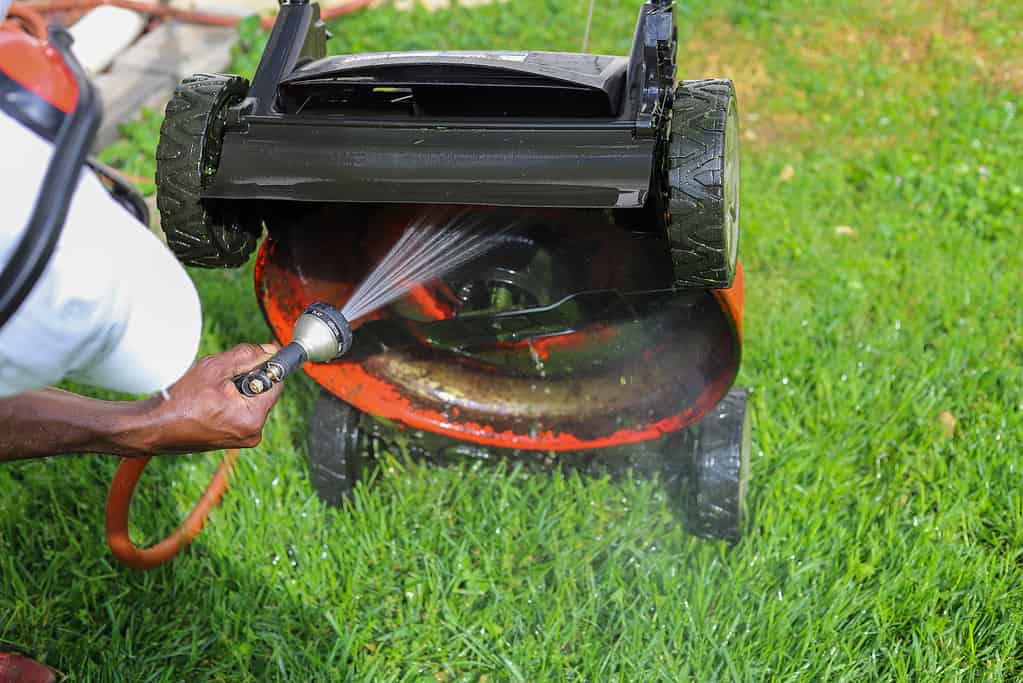
A clean lawnmower helps to combat rust and corrosion.
©Robin Gentry/iStock via Getty Images
An excellent place to start would be to clean your lawnmower thoroughly. Wash and hose off the outside and top of the lawnmower. When the outside is clean, tackle the undercarriage and remove debris and grass particles stuck to the blades and other sections under the machine.
By cleaning the top and underside of the lawnmower, you will prevent your trusty garden helper from deterioration, rust, and corrosion, which will cause your machine to age prematurely.
3. Empty the Fuel Tank

Empty the fuel tank to prevent clogged fuel lines.
©Greggory DiSalvo/iStock via Getty Images
Gasoline left stagnant in a lawnmower can break down and turn into a gummy substance, which could eventually clog up the machine’s fuel lines. This condition will cause expensive damage to your lawnmower.
To prepare your lawnmower for storage during winter, run it until the fuel tank is nearly empty or use a siphon to remove the fuel. You can also add a fuel stabilizer to any remaining gas to prevent deterioration and engine damage.
4. Change the Oil

New oil prolongs engine life.
©knowlesgallery/iStock via Getty Images
Consult the owner’s manual, which contains recommended oil specifications and levels. Changing the oil at set intervals will extend the life and performance of your machine. It’s wise to winterize your lawnmower with fresh oil because old oil contains wear and tear particles and contaminating impurities, which can cause unwanted damage to the engine.
5. Replace the Air Filter

Replace the air filter to maximize performance.
©JJ Gouin/iStock via Getty Images
Lawnmowers typically operate in a dusty environment, and experts recommend that you clean or replace air filters regularly. A clean air filter is vital for optimum engine performance. Preparing your lawnmower for winterization is an excellent time to replace the air filter.
6. Inspect the Spark Plug

New spark plugs are inexpensive but help with performance and easy starting.
©Jens_Lambert_Photography/iStock via Getty Images
If you have replaced the spark plug recently, you can just remove and inspect it to identify if it’s fouled or damaged. Some homeowners will use a spark plug for more than one year, but for what a spark plug costs, it’s not worth running the risk of having to deal with starting difficulties.
People in the know recommend that you replace the spark plug every year. After all, what is the use of having a clean lawnmower but struggling to start it when you want to start mowing?
7. Lubricate Moving Parts
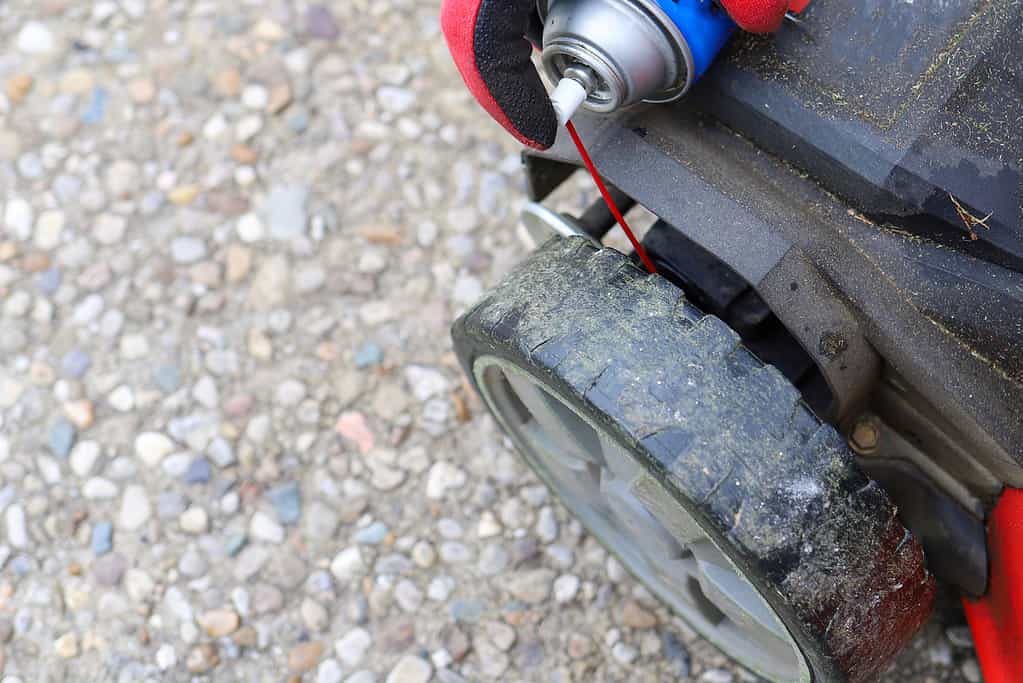
Lubrication of moving parts improves ease of operation and safety.
©Robin Gentry/iStock via Getty Images
Apply lubrication to all moving parts, such as the wheels, suspension, throttle cable, and any linkages. Proper lubrication prevents rust, limits wear and tear, and ensures smooth operation when you use the mower again.
8. Check and Sharpen Blades

Sharp blades mean carpet-like lawns.
©africa_pink/Shutterstock.com
A dull or damaged blade will reduce your lawnmower’s performance and efficiency. The preparation for winterizing is an excellent time to check the blades. You may want to replace them if they have excessive wear or are damaged. If you do not have the tools, you can take the lawnmower to a workshop, which will take a few minutes to fix. You need sharp blades to produce a park-like lawn.
9. Clean the Undercarriage

A clean undercarriage improves performance and efficiency.
©ronstik/iStock via Getty Images
The grass clippings and debris caked under the mower deck can lead to rust and reduce cutting efficiency. Use a scraper or hose to clean the undercarriage thoroughly. After you’ve scraped off most of the build-up, an ordinary garden hose will dislodge the rest. A pressure washer will do the job quicker.
10. Store Indoors

Store your lawnmower indoors to protect it from the weather elements.
©Anze Furlan / psgtproductions/iStock via Getty Images
If you have the facility, store your lawnmower indoors for winter. Cover the machine in a dry, sheltered spot if you don’t have an indoor option. Cover your lawnmower with a waterproof tarp to limit water and dust ingress.
11. Disconnect the Battery
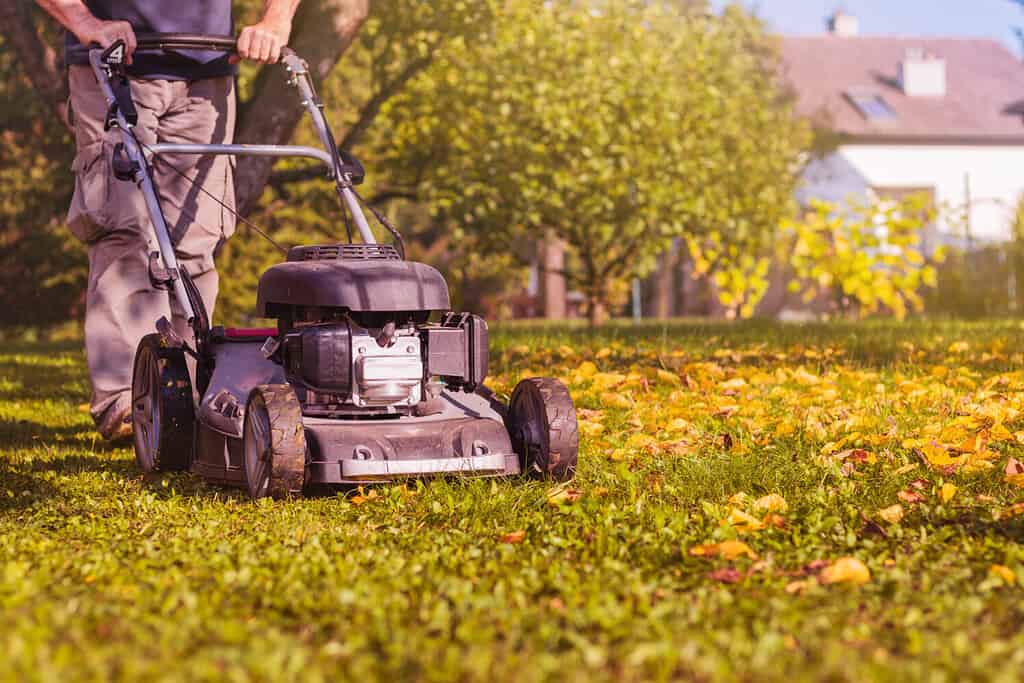
Disconnect the battery to prevent it from power draining.
©encierro/Shutterstock.com
If you have a lawnmower with an electric starter, disconnect the battery to prevent it from draining or freezing during the chilly months. Battery experts suggest connecting the battery to a smart charger that will condition the lawnmower’s battery throughout the winter months.
12. Inspect Belts and Hoses
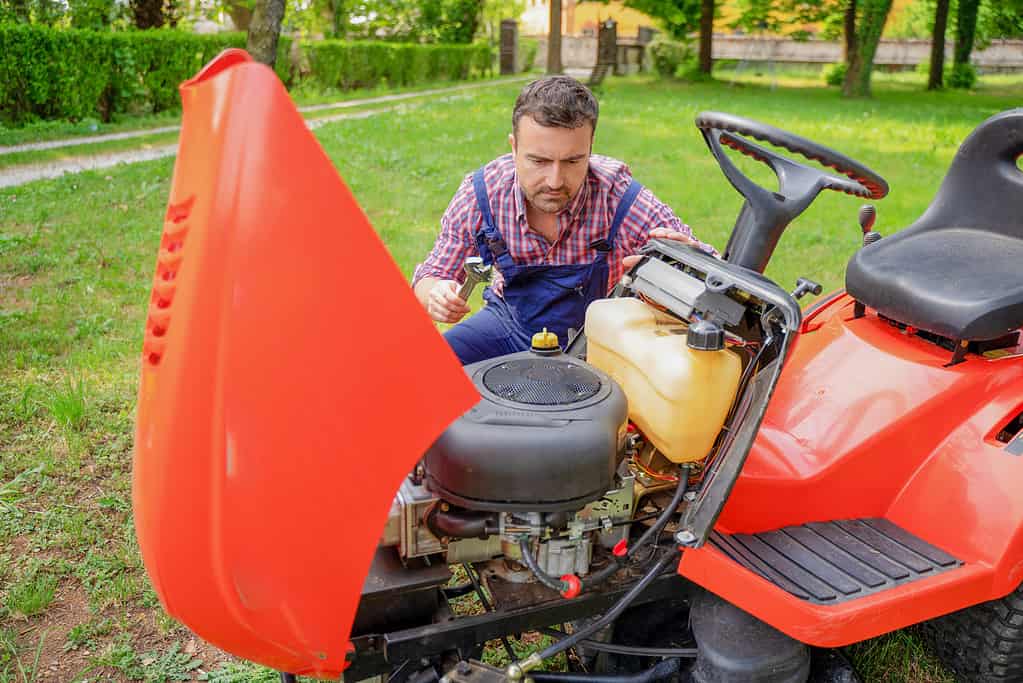
Replace worn belts and hoses for maximum performance.
©tommaso79/iStock via Getty Images
Examine the belts and hoses, and if you detect any sign of wear or damage, replace them before you store the machine for winter. Worn belts and hoses can lead to sluggish performance and risk damaging your lawnmower. If your lawnmower has a pull cord, inspect it. If it’s frayed or damaged, you must replace it.
13. Protect Against Pests
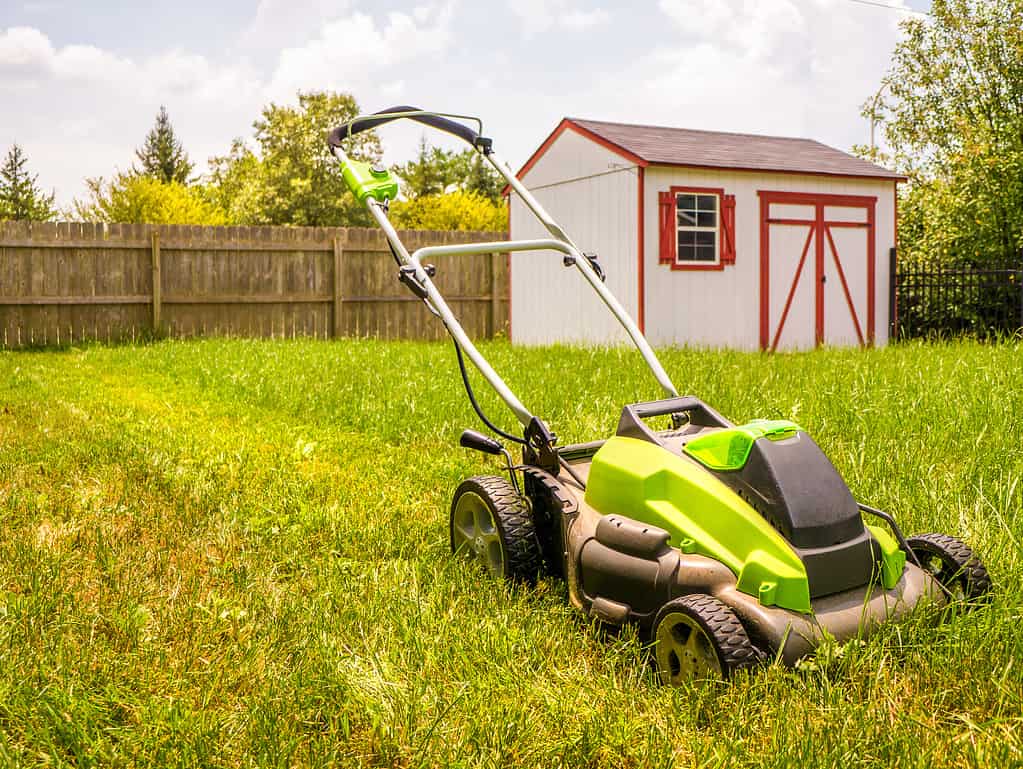
Store your lawnmower in a storage shed and off the ground to protect it from pests.
©leightrail/iStock via Getty Images
Your stationery lawnmower will be a welcome shelter for mice, rats, or other rodents during winter. A handful of mothballs will be a deterrent for these unwanted friends. These critters can cause expensive damage to wires, cables, and hoses. You can also elevate the machine on a stand to make it less accessible for rodents.
14. Maintain Proper Tire Pressures
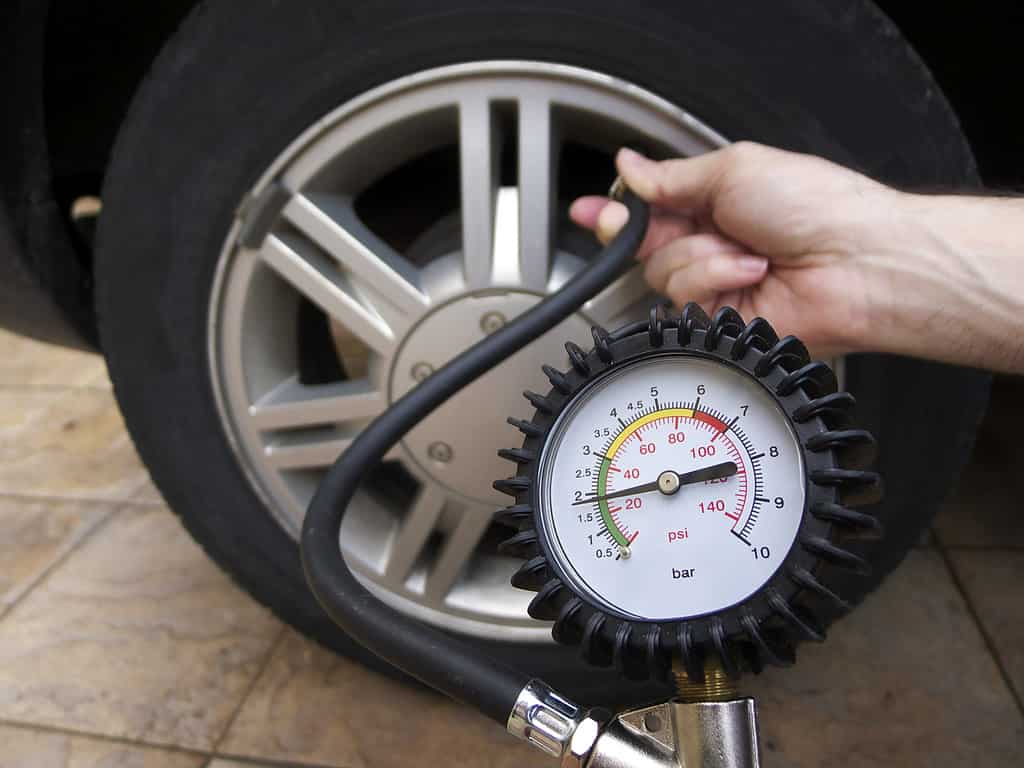
Inflate tires with recommended pressures for smooth and efficient operation.
©NiroDesign/iStock via Getty Images
Don’t forget the tires! It is an excellent time to be sure you have correctly inflated your lawnmower’s tires. So, ensure you have inflated the tires to the recommended air pressures according to the manufacturer’s recommendations in your owner’s manual. Incorrect tire pressure will cause damage and flat spots during the winter, and you may have to replace the tires prematurely.
Final Thoughts
Winterizing your lawnmower is essential for its longevity and reliable performance in the coming spring. These 14 steps to winterize your lawnmower are a comprehensive guide to ensure your valuable equipment stays protected and remains in top shape during the cold, dormant months. Following these recommendations can prevent costly repairs, extend your mower’s life, and maintain your lawn’s health.
Remember, a well-preserved lawnmower saves you money and allows you to enjoy a lush, healthy lawn when the warm seasons return. So, never forget these steps to winterize your lawnmower, and you’ll reap the benefits of a trouble-free and efficient machine year after year.
Summary of How to Winterize a Lawnmower
| Steps | Winterizing a Lawnmower |
|---|---|
| 1 | Read the Owner’s Manual |
| 2 | Clean your Lawnmower Thoroughly |
| 3 | Empty the Fuel Tank |
| 4 | Change the Oil |
| 5 | Replace the Air Filter |
| 6 | Inspect the Spark Plug |
| 7 | Lubricate Moving Parts |
| 8 | Check and Sharpen Blades |
| 9 | Clean the Undercarriage |
| 10 | Store Indoors |
| 11 | Disconnect the Battery |
| 12 | Inspect Belts and Hoses |
| 13 | Protect against Pests |
| 14 | Maintain Proper Tire Pressures |
Thank you for reading! Have some feedback for us? Contact the AZ Animals editorial team.

